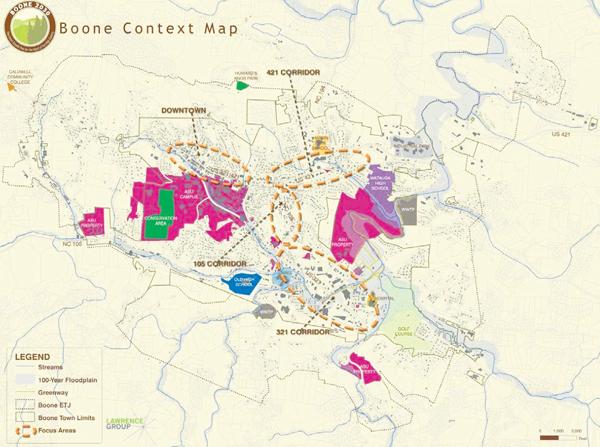 Both the university and the town of Boone have “master plans,” which explain what they want to see happen within the next 20 years.
Both the university and the town of Boone have “master plans,” which explain what they want to see happen within the next 20 years.
Appalachian’s plan is called “Campus Master Plan 20/20” and Boone’s is called “Boone 2030: The Smart Growth Plan for the Heart of the High Country.”
The comparison of the two plans show that they do work together to keep intact the integrity of the town as well as the campus, Town Council Member Andy Ball said.
Both master plans used the same consultants to make sure the plan would work together, Ball said.
Working together on each master plan has enhanced the relationship between the town and school, Ball said.
Both plans agree that Boone needs more parking, but adding parking can be very difficult since King Street is considered a state highway, Town Council Member Rennie Brantz said.
Since it is considered a state highway, it is under the jurisdiction of the North Carolina Department of Transportation, Brantz said.
Even adding new streetlights involves a lot of paperwork, Brantz said.
The most important idea in Boone’s 2030 plan is new apartments for students and figuring out how they will fit into the overall community of Boone, Brantz said.
“Keeping the integrity of the town is the most important part to the plan,” Brantz said.
One plan for downtown is to limit the heights of the buildings, Brantz said. The height limit will make sure nothing looks too out of place, he said.
The current height limit is four stories in downtown, so a building taller than that would not “fit in,” Brantz said.
Both plans hope to improve the AppalCART system by “providing seamless bus transfer locations on campus through revision of route design,” according to masterplan2020.appstate.edu.
Boone’s 2030 plan wants to improve the amount of time between stops as well “improve the communication of the transit services information,” such as real time bus arrival updates, according to thelawerencegroup.com/boone2030.
This plan is a vital element of our long-term future here in Boone, Ball said.
“We need even more citizen input to help put this vision into action,” Ball said.
Story: LINDSAY BOOKOUT, News Reporter
Photo Courtesy Town of Boone

